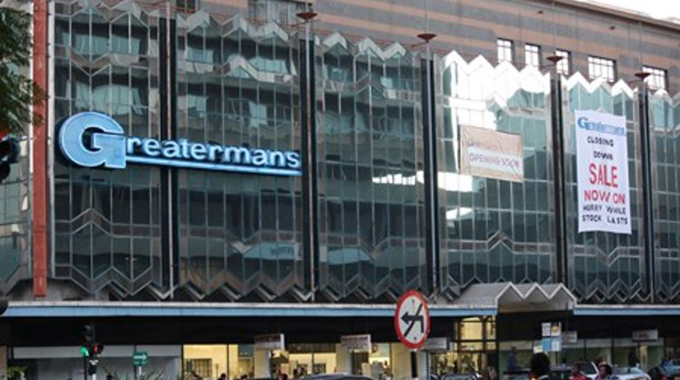The rise and fall of departmental stores

Mirriam Madiye
Lifestyle Correspondent
Zimbabwe’s departmental stores have been on a sinking ship for several years ending a colourful shopping experience that was once popular for middle income and big elite spenders.
The bankruptcy clock ticked and several major brands such as Woolworths’, Marcy’s, HM Barbours, Greatermans’, Meikles, Clicks and a few others went under,
Turnaround plans were attempted for Clicks and Barbours, but the fast and dynamic market coupled with stiff competition from second hand clothes, cheaper clothes sources by smaller retailers from Dubai, China and other countries in Asia, as well as the dynamic economic environment, forced the closure of all the major brands.
A handful of department have survived and these include — Truworths, Jet and Edgars.
Memories still linger on for many people who were so accustomed to the high-end department store chain buying.
Shopping at departmental stores during Christmas was such a big thing. Families would look forward to the experience.
The stores would by this time be packed with shoppers buy a wide range of brands on credit.
The stores would be abuzz with shoppers jostling to get the best brand available.
Departmental stores would offer a selection of electronic and household appliances, ladies’ and men’s fashions, boys’ and girls’ wear, furniture, kitchenware, luggage and travel accessories, a wide range of shoes and footwear, baby and toddler gear, toys, and other family goodies.
For the shopping lovers, departmental stores were the convenient and best places to spend their day in as the service was unique and a cut above the rest.
The departmental stores made shopping a pleasant experience.
Stress of thinking of parking space was a thing of the past as there were ample car parking facilities.
“One would also enjoy recreational and self service facilities during shopping.
HM Barbours would enjoy business from high profile shoppers such as former presidents Robert Mugabe and Canaan Banana and other business and political elites.
At one point, HM Barbours Store even got the unlikely client — the late Renamo leader Afonso Dhlakama who had visited Zimbabwe when Frelimo and the rebel movement struck a deal to end the conflict in Mozambique around the 1990s.
Shopping was hassle free unlike nowadays where one has to move from one shop to another looking for various products.
The Herald walked down memory lane with various people, rekindling different feelings about the decline of departmental stores
Chido Nyama, of Glen Lorne says shopping departmental stores was quite exciting.
“The departmental stores were very convenient as you would just enter into one shop and purchase all the necessary things that you require in one location instead of having to go to multiple stores. This would save time and effort,” she said.
“Shopping these days has changed drastically. It is now boring and unpleasant because you won’t find all the goods in one shop.
One has to roam around the shops and some of the brands are not the best and below quality hence some people are now resorting to buy online and even the malls.
“The service given by the departmental stores was excellent. They treated a customer like a king or queen unlike these days.”
Nyama said departmental stores were centrally located and in prominent places and this made shopping easy as one would not travel out of town.
“For example here in Harare, you would Barbours Store, Greatermans, Meikles, Edgars, Woolworths and others were all located in the central business district where it was most accessible to a number shopper,” she said.
Martin Tinarwo said the disappearance of the departmental store has been replaced by the introduction of malls.
“Shopping malls are replacing the departmental stores because at the malls you find items almost the same as those that were found in the departmental stores.
The items will be expensive but they will be of good equality,” said Tinarwo.
Rudo Tigere thinks differently. She argues that the stores catered only for the rich and less for the poor.
“The problem with those stores was that they were very expensive to such an extent that some people would not afford to buy there as the stores sold expensive brands such as Kelso, Calvin Klein and numerous others.
“The poor would go downtown to Indian shops ‘Buyatinapanganas’ or buy second hand clothes sold in low density suburbs,” she said.
“Even though they would do promotions here and there, their prices were exorbitant. Shops like Jet, Edgars and Truworths do not offer a huge range of products that were found in these departmental stores back then.”
Zimbabwe is not alone, even globally, many countries have seen the rise and fall of departmental stores.
Retailing analysts say department stores were in trouble because they had failed to keep up with shoppers’ changing tastes.
Several factors combined have caused the decline of departmental stores over the last two decades.
Consumers have become more aware of their own agency and options.
Customers take a new approach to making purchases, one that emphasizes price comparison and the ability to purchase through different platforms.
They can combine online shopping with a visit to a specific retailer or third-party seller in the same trip in order to find the best deal. All this, coupled with the difficult economic conditions that prevailed over the past two decades, forced the stores to shut down.
Inflation in the past, made it difficult to offer credit sales to shoppers.
Shoppers now, are not just interested in the all-purpose shopping experience as they used to be.
Critics suggest that department stores are boring, overpriced, middle class and elitist and inconvenient compared to the other options out there. They say times have changed and shoppers want anything more than departmental stores.
“It’s time to modernise in order to compete with the convenience of online shopping and changing consumer tastes,” said one retail analyst.
“The ‘stores of the future’ will need to create engaging shopping experiences that make coming to a departmental store worthwhile.”









Comments